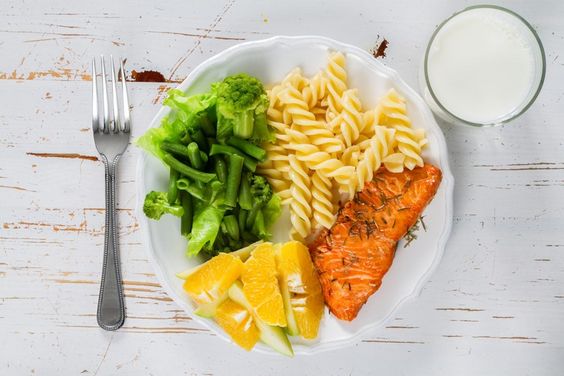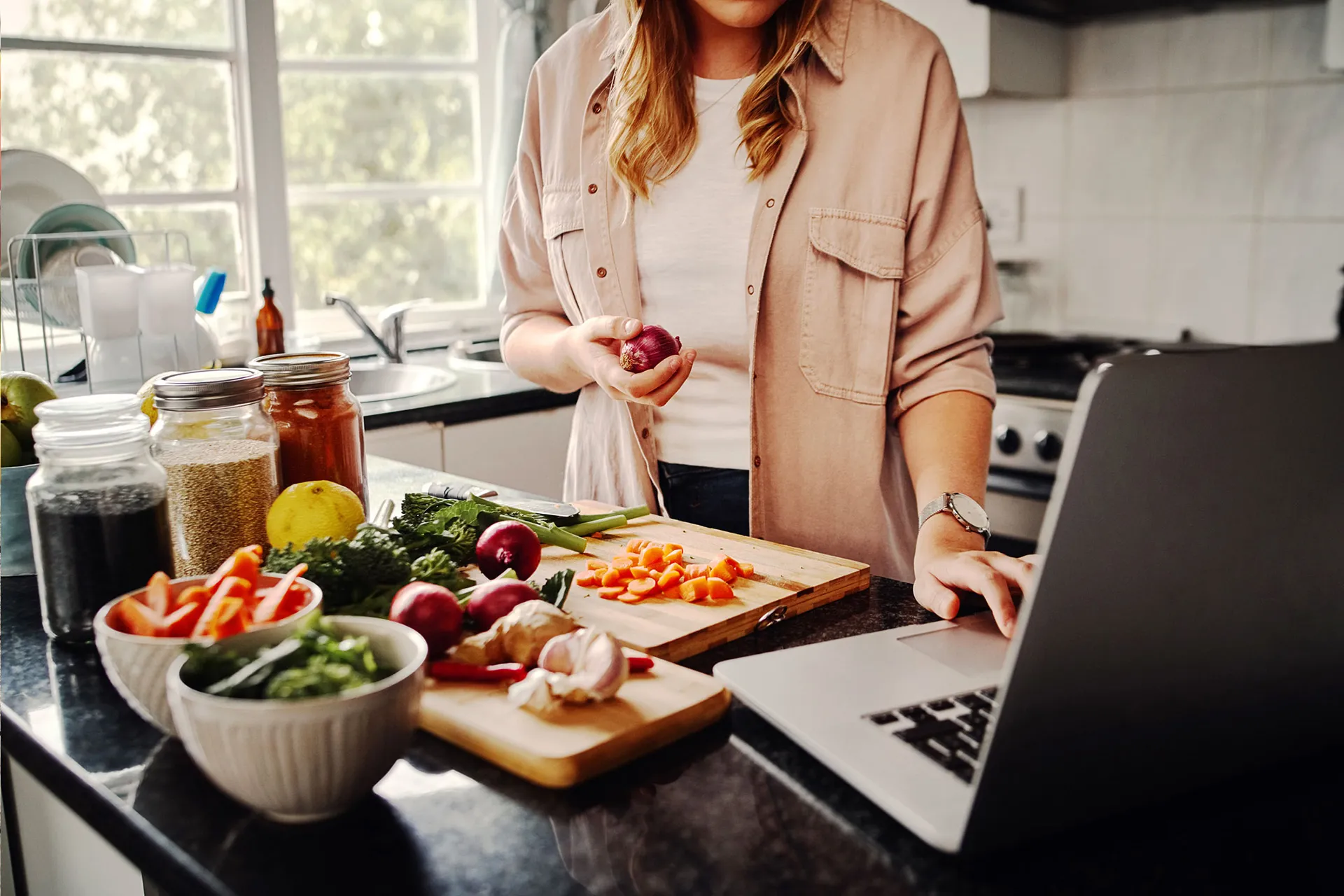Portion control is a key strategy for those aiming to manage their weight effectively while still enjoying their meals. By understanding how much food your body actually needs, you can eat less and still feel satisfied. Many people underestimate proper serving sizes, leading to overeating, even when they believe they are making healthy choices.
You don’t need to feel deprived to lose weight. Learning to adjust your portions can help you enjoy a variety of foods while supporting your nutrition. With simple strategies like using smaller plates and becoming more mindful during meals, you can develop a healthier relationship with food.
Making better food choices and recognizing how to serve them correctly can also play a significant role in weight management. By focusing on what you eat and understanding the science behind hunger and fullness, you’ll find it easier to make lasting changes in your eating habits.
Key Takeaways
- Portion control helps you eat less without feeling hungry.
- Smaller plates and mindful eating can improve your nutrition.
- Adjusting portion sizes aids in better weight management.
Understanding Portion Control
Portion control helps you manage how much you eat. It focuses on knowing the difference between portion sizes and serving sizes, and using visual cues for estimating portions can make a big difference in your eating habits.
Defining Portion Sizes and Serving Sizes
A portion size is the amount of food you choose to eat at one time. This can be more than a single serving. A serving size, on the other hand, is a standard measure set by nutrition guidelines. For example, one serving of pasta is typically about 1 cup.
Understanding these differences is crucial for healthy eating. When you know how to measure portions, you can make better food choices. It’s helpful to refer to nutrition information on food labels, which outlines serving sizes.
Using measuring cups or a food scale can also help you determine accurate portion sizes. Learning to recognize these can aid in weight management and improve your overall health.
Visual Cues for Estimating Portions
Using visual cues can be a simple way to control portions without weighing food. For example, you can think of a medium piece of fruit as about the size of a tennis ball.
Here are some common visual cues:
- 1 cup of pasta: about the size of a baseball
- 3 ounces of meat: roughly the size of a deck of cards
- 1 tablespoon of oil: about the size of a thumb
You can also use smaller plates and bowls. This can help trick your brain into feeling satisfied with less food. When you fill a smaller plate, it looks full, which can prevent overeating.
Visual cues and smaller dishes can support you in eating balanced portions while enjoying your meals.
The Science Behind Feeling Full
Feeling full, or satiated, is essential for managing hunger and controlling portion sizes. This section explores how your body signals fullness and the nutrients that help promote this feeling.
Satiety and its Role in Hunger
Satiety is the sensation of fullness that occurs after eating. It helps control your hunger and prevents overeating. When food enters your stomach, it stretches, sending signals to your brain about fullness. Key brain regions, like the hypothalamus, play a major role in this process.
Certain hormones, including leptin and ghrelin, influence satiety. Leptin decreases appetite, while ghrelin increases it. A balance between these hormones helps you feel satisfied after meals. If you’re not getting enough fiber and protein, you might feel hungry sooner.
Nutrients that Promote Fullness
Several nutrients are particularly effective at promoting feelings of fullness.
- Fiber: It takes longer to digest, helping you feel full longer. Soluble fiber, found in foods like oats and beans, also slows digestion and keeps you satisfied.
- Lean Protein: Foods like chicken, fish, and plant-based proteins can help alter hunger hormones. They contribute to a longer-lasting feeling of fullness compared to carbohydrates.
- Healthy Fats: Foods such as avocados and nuts provide energy and promote satiety. They slow stomach emptying, which can keep hunger at bay.
Incorporating a mix of these nutrients into your meals can help you manage hunger and control portion sizes effectively.
Practical Portion Control Strategies
Effective portion control can help you eat less while still feeling satisfied. By practicing mindful eating and staying hydrated, you can manage your food intake better and develop healthier eating habits.
Mindful Eating Techniques
Mindful eating is a strategy that encourages you to pay full attention while eating. This means focusing on each bite, appreciating the flavors, and recognizing when you are full.
- Eat Slowly: Take your time with meals. Chewing thoroughly and savoring your food can help you enjoy smaller portions without feeling deprived.
- Avoid Distractions: Turn off screens and minimize interruptions. This allows you to concentrate on your meal and listen to your body’s hunger cues.
- Smaller Plates: Using smaller plates can change your perception of portion sizes. When you serve food on smaller dinnerware, it may appear to be a larger portion, helping to control how much you eat.
Hydration and Portion Control
Staying hydrated is a key part of managing your portions. Drinking water before meals can fill you up slightly, making you less likely to overeat.
- Drink Water: Aim to drink a glass of water about 30 minutes before you eat. This not only helps your stomach feel fuller but can also aid digestion.
- Healthy Hydration Choices: Opt for water or herbal teas rather than sugary drinks. These choices support hydration without adding empty calories.
- Recognize Hunger vs. Thirst: Sometimes, feelings of hunger can actually be thirst. Before reaching for a snack, try drinking a glass of water and wait a few minutes to see if you still feel hungry.
By applying these strategies, you can enjoy meals while keeping portions in check.


Food Choices and Serving Recommendations
Making smart food choices can help you manage portion sizes while still feeling satisfied. By focusing on high-volume, low-calorie foods, and following serving recommendations for common items, you can enjoy your meals without overeating.
Incorporating High-Volume, Low-Calorie Foods
High-volume, low-calorie foods are great for filling you up without adding too many calories. Consider eating more non-starchy vegetables like spinach, broccoli, and carrots. These foods are high in water and fiber, helping you feel full.
Low-calorie soups, especially broth-based ones, can be a good starter. They can decrease hunger and help you eat less during the main meal.
Adding beans to your diet also helps increase fiber intake. They provide protein and can be very satisfying.
Options like apples and oats are excellent snacks. Apples are low in calories and high in fiber. Oats can keep you full longer, making them a smart breakfast choice.
Portion Recommendations for Common Foods
To help you manage portions, here are some serving sizes for common foods:
- Cooked Pasta: 1/2 cup (about 75 grams)
- Cooked Rice: 1/2 cup (around 100 grams)
- Beans: 1/2 cup
- Eggs: 1 large egg as a serving
When it comes to vegetables, aim for at least 1 to 2 cups of non-starchy vegetables per meal. You can also go for more if you like.
By sticking to these serving sizes, you can better control your calorie intake and still enjoy a variety of foods.
How Portion Control Aids in Weight Loss
Portion control plays a significant role in managing your calorie intake while helping to curb overeating. By being mindful of how much you eat, you can effectively lose weight and reduce cravings. Here are key insights into this important topic.
The Relationship Between Portion Control and Caloric Intake
Controlling your portions directly impacts your caloric intake. When you reduce the amount of food on your plate, you naturally cut calories. Using smaller plates can trick your mind into thinking you are eating more.
For example:
- Smaller Plates: Using a 9-inch plate instead of a 12-inch one can make a big difference.
- Measuring: Utilize measuring cups to serve out proper portions.
Many people eat mindlessly, leading to unintentional weight gain. By focusing on portion sizes, you can stay within your calorie goals and lose weight gradually.
Avoiding Overeating and Managing Cravings
Portion control helps you avoid overeating, which is when you consume more food than your body needs. This can happen due to excitement about a meal or social situations.
To manage this:
- Pre-portion Snacks: Instead of eating from the bag, pour a sensible amount into a bowl.
- Slow Down: Eating slowly allows your body to signal when it’s full.
Additionally, controlling portions can help with cravings. When you eat a smaller amount, you can enjoy a treat without feeling guilty. By practicing mindful eating, you can satisfy your cravings while keeping your weight loss goals in sight.
Frequently Asked Questions
Managing portion sizes can significantly support your weight loss journey. You can use various strategies and techniques that promote a sense of fullness while controlling food intake.
What are effective strategies for managing portion sizes to aid in weight loss?
Using smaller plates is a simple yet effective strategy. This can trick your brain into feeling satisfied with less food. Measuring your servings with cups or spoons can also help you keep track of portion sizes.
Can implementing portion control help in achieving a feeling of fullness with less food?
Yes, portion control can lead to feeling full with smaller amounts of food. Foods that are high in volume and low in calories, like fruits and vegetables, can fill your plate and your stomach while keeping calories in check.
What psychological techniques are beneficial for reducing food intake?
Mindful eating is a valuable technique. This means paying attention to what you eat and savoring each bite. Slowing down during meals can also help you recognize when you’re full, reducing the urge to overeat.
How does portion control impact overall weight loss efforts?
Portion control helps you manage calorie intake effectively. By eating appropriate amounts, you can avoid consuming excess calories, which is essential for weight loss. This strategy can also support sustainable eating habits over time.
Are there specific portion control methods recommended for women on a diet plan?
Women can benefit from visual cues, like using their hand to measure portions. For example, a serving of protein could be the size of a palm. Using smaller bowls for snacks can also help manage how much you eat throughout the day.
What are some common examples of portion control in a balanced diet?
Examples include filling half your plate with vegetables, a quarter with lean proteins, and the remaining quarter with whole grains. Using single-serving packages for snacks can also be helpful in controlling portions and preventing overeating.




